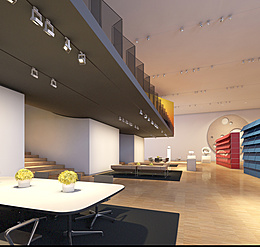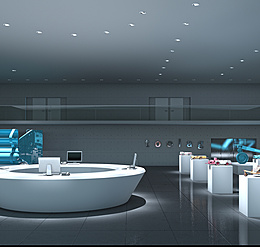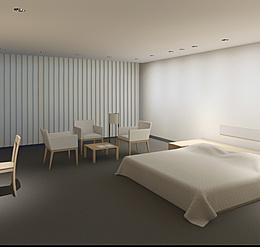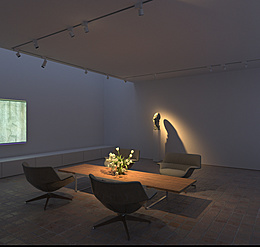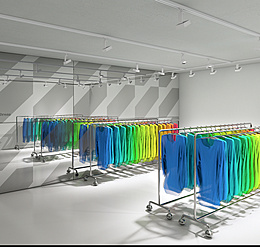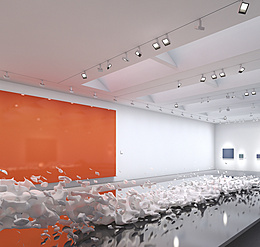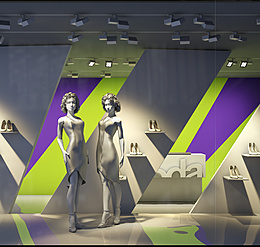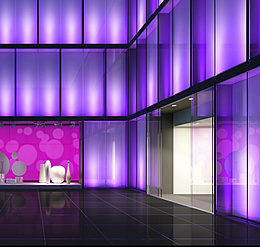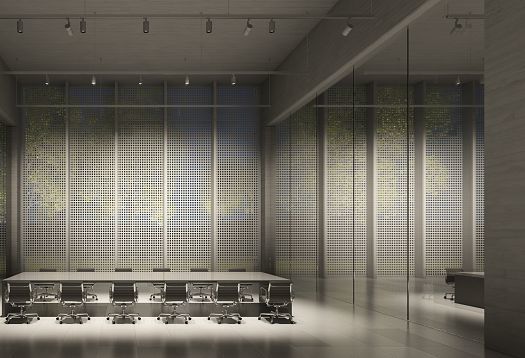
The ratio of the luminance levels in front of and behind the pane of glass determines how easily one can see through the window. Inclined glass surfaces require additional analysis to minimise the reflections caused by light. When it comes to fabric materials, their degree of transparency is dictated not only by their transmission factor but also by their colour and the lighting situation. The lighting in this boardroom uses spotlights, wallwashers and even indirect luminaires, with the trees outside being illuminated by projectors.







